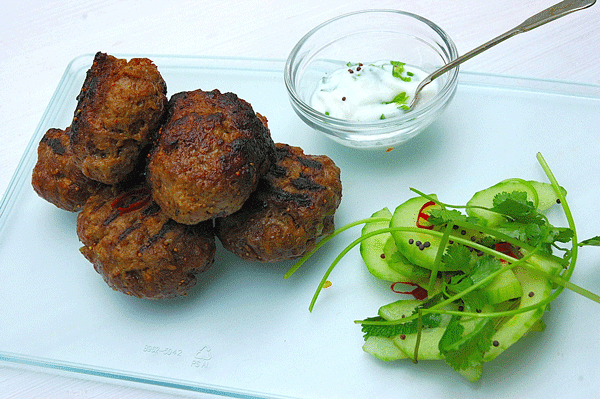If you’ve ever seen the movie Casablanca, you were no doubt captivated by the mystique of Morocco. Home to an estimated 34 million people, Morocco is a culturally rich amalgamation of Arabic, Spanish, French and Berber (the original tribes of North Africa that represent a mixture of different ethnic groups) cultures, each infusing the landscape with their own unique traditional cuisine, customs, music and history. In fact, many travelers lovingly refer to Morocco as “a magical and mysterious blend” of cultural influences.
Situated just a short ferry ride from the southern tip of Spain, Morocco (with Marrakesh, Fès, Rabat and Tangiers being the major cities) is sandwiched between the Atlantic Ocean to the west, Algeria to the east, the Mediterranean Sea to the north, and the western Sahara to the south. With a backdrop encompassing spectacular mountains, a picturesque coastline, expansive sand dunes and vibrant cities and villages, it’s no wonder it is considered one of the most beautiful countries in the world.
Devouring Morocco
In terms of gastronomic delights, Morocco is brimming with a vast diversity of regional culinary specialties and traditions that together offer a feast for the body, mind and soul.
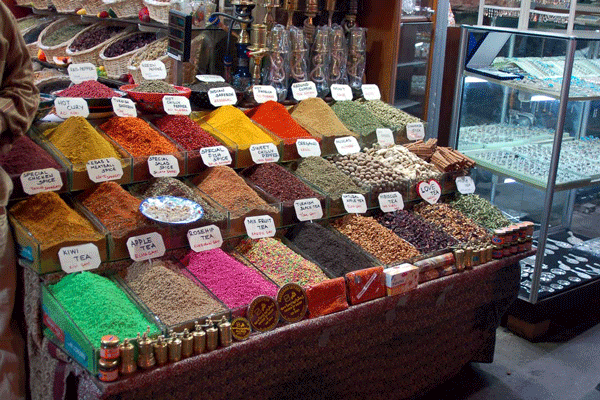
The country is a cornucopia of distinctive recipes created from an abundance of homegrown and imported spices such as kharkoum (turmeric), libzar (pepper), karfa (cinnamon), zaafran beldi (saffron) and coriander; fragrant herbs like mint and sandalwood, succulent Mediterranean fruits and vegetables including oranges, pumpkin, lemons, pomegranates, figs, eggplant, spinach, artichokes, peppers, and sweet potatoes; and a plethora of fresh seafood, and earthy meats including mutton, rabbit, lamb, chicken, beef and sometimes camel.
As in many countries and cultures, careful and artistic meal preparation and presentation is almost as important as the food itself. In Morocco the midday repast is the main meal of the day, except during the holy month of Ramadan—the Islamic month of fasting—when the fast is broken at sunset on the last day with a sumptuous meal. But it’s the Moroccan people’s passion for cooking and community that bring the food here to life, and clearly says, “Mrehba (Welcome) to Morocco!”
Harira, Pastillas and Zaalouk – Oh My!
Why not start your gastronomic adventure with a stogie? Now don’t worry, there’s no need to look for matches or an ashtray, as a stogie here is a popular (and non cancer-inducing) appetizer made with ground beef wrapped in a fluffy dough. Other popular Moroccan appetizers are Djaj Souiri, an omelet-like chicken and egg dish with saffron, cinnamon and ginger; fried or baked Msemens, a Moroccan pancake with ground beef and/or onion; and believe it or not, Danish Edam cheese as part of a typical cheese plate.
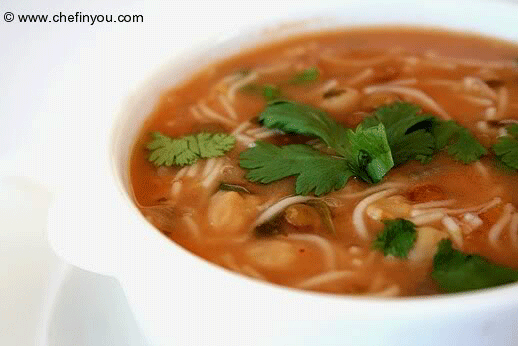
Potages—soups—are meal mainstays here also. These include the traditional Moroccan Harira—a lentil and tomato concoction best-loved during Ramadan and infused with cilantro, ginger, onion, cinnamon, celery, pepper and parsley—Bessara, a vegetarian split pea soup, Dchicha dyal Zraa made with cracked wheat, onion and olive oil, and several varieties of a semolina soup made with anise, milk, honey and/or saffron, the latter sometimes also served for breakfast.
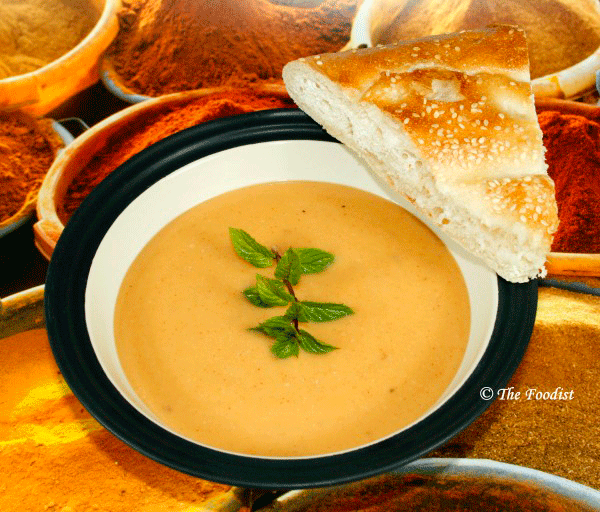
The national dish of Morocco is the wheat kernel Couscous, and you will find it served in a wide array of creative and delightful variations made with allspice, kosher salt, cumin, garbanzo beans, chicken broth, cayenne pepper, fresh mint, red onion, raisins, yellow, green or red bell pepper, cloves, coriander and/or zucchini, in addition to other herbs and spices. Pastillas from the Berber culture, which are for the most part served as an appetizer, are hearty sweet and salty meat pies where the ingredients often vary with what is available in a particular region. But expect to find them made with some combination of fish, shredded chicken, squab, sugar, onions, parsley, cinnamon and ground almonds inside of a thin, phyllo-like dough. Even non-fans of the full bodied “big purple plant” will most likely enjoy Zaalouk, a Moroccan eggplant dish where chunks of fresh, plump eggplant are combined with cilantro, paprika, vinegar, pepper, tomatoes, cumin, garlic, salt, olive oil, and parsley.
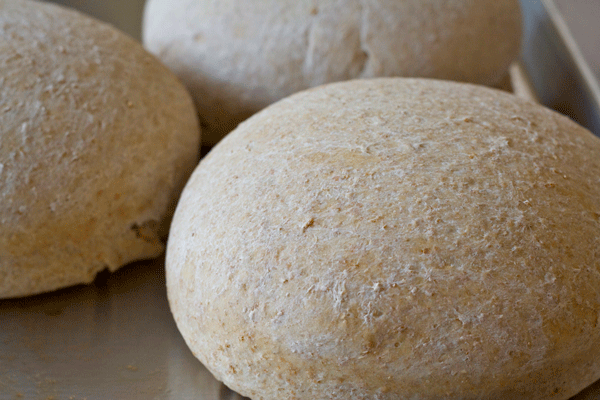
Every meal is served with some kind of bread, including flat bread called Khubz Maghrebi, country bread kneaded into fist-size balls, to Harcha or Harsha—a combination of semolina flour, baking powder, butter, vegetable oil, milk and salt and pan-fried bread with a texture and taste similar to cornbread and resembling that of an English muffin. These breads, in addition to a variety of other regional varieties, are also often used as a utensil with which to pick up your food, since most Moroccan meals are eaten with your hands.
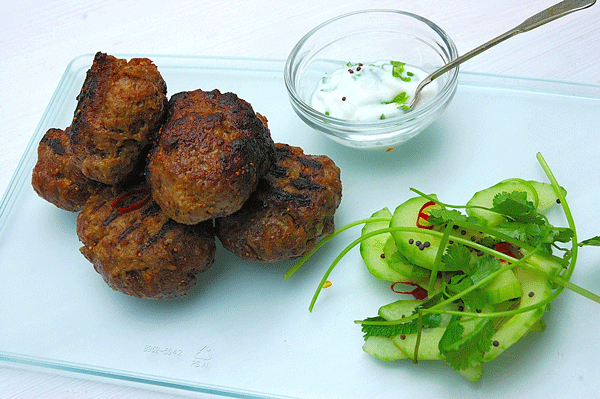
The wealth of Morocco’s robust culinary dishes really takes center stage with the main dishes. One staple found all over the country is Kefta, balls of ground lamb or beef mixed with the “chef’s choice” of ground pepper, paprika, mint, cinnamon, minced onion, cumin, and coriander (they are also sometimes cooked and served on skewers). You will also find Khlea, a cooked, dried meat preserved in its own fat and olive oil and often eaten by itself as a snack, or served with a variety of vegetables like black-eyed peas; Merguez, a spicy sausage made with ground lamb and/or beef and served as links, patties, in pastries, with eggs and other presentations; and Ferakh Maamer, a casserole of spring chicken stuffed with couscous sweetened with sugar, almonds, raisins and orange-flower water, simmered in cinnamon, garlic, saffron, onion, honey and ginger.
Everything Comes to a Mouth-Watering End
No Moroccan meal would be complete without dessert—another taste bud enticing experience of its own. In addition to a medley of seasonal fruits, Moroccans also serve incredible sweets such as Briouat or Kaab el Ghzal (similar to baklava), a triangular shaped flaky pastry filled with almond paste and dipped in honey. Zucre Coco, a coconut fudge cookie and Halwa Shebakia, deep-fried, pretzel-shaped dough plunged into hot honey and sprinkled with sesame seeds are other popular desserts.
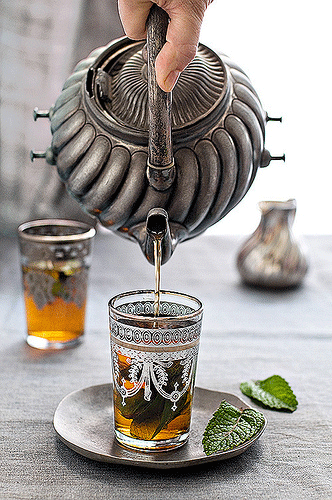
And to drink? Everywhere you go—in fact at least twice a day—the denizens here drink Moroccan Mint Tea, green tea made with mint and sugar. Moroccan Mint Tea transcends serving as a mere refreshment, to holding its own as a true art form. Traditionally served by the men, its significance comes through in the “pouring,” from special tea pots with curved spouts from high above the table, splashing creatively yet gently into short glasses. Whether enjoyed with a meal or on its own, a day without Moroccan Mint Tea is like a day without air—it’s such an inextricable part of the culture.
So whether in Casablanca, Tangiers, Marrakesh or Fès; Zagora, Essaouira, Rabat, Salè or Agadir, you’re sure to enjoy one of the most fantastic epicurean adventures in the world.
Eating Around in Morocco
Marrakesh
Dar Najat’s Kitchen
212 524 375 085, www.dar-najat.com/marrakech/en/gastronomy.html
Tangiers
El Korsan
212 539 333 444, www.elminzah.com
Tom Yam
0539/320897, 0661/199477 www.villa-thai.com
Essaouira
Lalla Mira
212 524 475 046, www.lallamira.net
Restaurant Baraka
0524/473561
Fes
Al Khozama
0664/143424
Restaurant Zohra
0535/637699

